This is what Koko does when he knows answering a question will lead somewhere he does not want it to. This is why he's answering for Angelo. He doesn't want Angelo to say something stupid either. It's a game he likes to play.thanks for answering the question!the question remains, what are you trying to prove?
I'm not trying to prove anything. Poor Angelo claimed free-fall and his own source
said 64% of free-fall. Do you understand the error in his claim? Are you retarded?
so then gam and you believe that 64% of freefall in a vacuum means that no explosives were used and it was not a demolition?
Are you going to post the formula for free fall at 1 atm, or are you going to keep whining?
Navigation
Install the app
How to install the app on iOS
Follow along with the video below to see how to install our site as a web app on your home screen.
Note: This feature may not be available in some browsers.
More options
You are using an out of date browser. It may not display this or other websites correctly.
You should upgrade or use an alternative browser.
You should upgrade or use an alternative browser.
All three towers collapsed by controlled demolition on 9/11 .
- Thread starter the other mike
- Start date
- Status
- Not open for further replies.
I thought nobody uses free fall in a vacuum to determine things here on earth Koko? Why did Chandler use "free fall in a vacuum" to compare a building falling on Earth?thanks for answering the question!the question remains, what are you trying to prove?
I'm not trying to prove anything. Poor Angelo claimed free-fall and his own source
said 64% of free-fall. Do you understand the error in his claim? Are you retarded?
so then gam and you believe that 64% of freefall in a vacuum means that no explosives were used and it was not a demolition?
KokomoJojo
VIP Member
- Oct 2, 2013
- 2,180
- 185
only someone blind as a bat with really good drugs would soapbox that nonsense since we can see beams bursting into flames and flying apart mid air and as they fall.There is no evidence of such demolitionm whatsoever
and you think 64% proves it wasnt demolished is that it?Angelo consistently states that the speded of the towers collapse PROVES controlled demolition but it does not prove any such thing.

Sure but you wont like it, or at least you will get an explanation why your hypothesis is patently ludicrous and proves nothing, even though I already to told you, but it obviously blew right by you, or you ignored it.I want you to explain Angelo's theory and explanation.
I already told you several times, resistance variables need to be added in. That includes everything that slows the rate of descent caused by gravity, cant put it much simpler than that.Are you going to post the formula for free fall at 1 atm, or are you going to keep whining?
KokomoJojo
VIP Member
- Oct 2, 2013
- 2,180
- 185
nah, your arguments are never thought out simpleton arguments, I easily pull the rug out from beneath you every time you post. It just takes a couple hundred posts before you figure that outThis is what Koko does when he knows answering a question will lead somewhere he does not want it to. This is why he's answering for Angelo. He doesn't want Angelo to say something stupid either. It's a game he likes to play.

I suppose since you and I have history you think you stand a better chance against angelo than me
I am willing to share some cheese since you kindly provided the whine!
Last edited:
the other mike
Diamond Member
- Jan 5, 2019
- 41,899
- 22,500
- Thread starter
- #305
Near-Free-Fall Acceleration | Twin Towers
According to the National Institute of Standards and Technology (NIST) — which is the U.S. government agency that investigated the World Trade Center’s destruction — the Twin Towers came down “essentially in free fall.” 1NIST’s theory of the collapses hinges on the idea that the upper section of each tower could continuously accelerate through the lower stories at nearly the rate of gravity, while in the process completely dismembering the steel frames and pulverizing nearly all of the concrete to a fine powder.
Yet NIST provided no modeling or calculations to demonstrate that such behavior was possible. Instead, NIST arbitrarily stopped its analysis at the moment of “collapse initiation,” asserting that total collapse was “inevitable” once the collapses initiated.2
Astonishingly, NIST’s entire explanation for why the lower sections failed to stop or even slow the descent of the upper sections is limited to half a page of its 10,000-page report, in a section titled “Events Following Collapse Initiation,” 3 which asserts:
“The structure below the level of collapse initiation provided minimal resistance to the falling building mass at and above the impact zone. The potential energy released by the downward movement of the large building mass far exceeded the capacity of the intact structure below to absorb that through energy of deformation.
“Since the stories below the level of collapse initiation provided little resistance to the tremendous energy released by the falling building mass, the building section above came down essentially in free fall, as seen in videos.” — p. 146, NIST NCSTAR 1
In 2007, a group of scientists, an architect, and two 9/11 family members filed a “Request for Correction” to the NIST report under the Information Quality Act. They argued that, among other things, NIST failed to establish the likely technical cause of the building failures because it did not explain why, after collapse initiation, total collapse had ensued.4 They wrote:
“Here, NIST has not offered any explanation as to why (i.e. the technical cause of) the story below the collapse zone was not able to arrest the downward movement of the upper floors. The statement “as evidenced by the videos from several vantage points” is only an explanation of what occurred, but gives the reader absolutely no idea why it occurred. Basic principles of engineering (for example, the conservation of momentum principle) would dictate that the undamaged steel structure below the collapse zone would, at the very least, resist and slow the downward movement of the stories above…. The families of the firefighters and WTC employees that were trapped in the stairwells when the entirety of the WTC Towers collapsed on top of them would surely appreciate an adequate explanation of why the lower structure failed to arrest or even resist the collapse of the upper floors.” — p. 20, Request for Correction
NIST responded to the Request for Correction with the remarkable admission that it was not able to provide a full explanation of the total collapse: 5
“NIST carried its analysis to the point where the buildings reached global instability. At this point, because of the magnitude of deflections and the number of failures occurring, the computer models are not able to converge on a solution…. [W]e are unable to provide a full explanation of the total collapse.” — p. 3-4, NIST Response to Request for Correction
Total Collapse Explained
While NIST failed to provide an explanation for the total collapse of the Twin Towers, several independent researchers have taken on that challenge.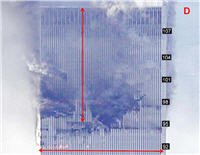
Central to their analysis has been to measure the downward motion of the upper section of WTC 1 (the North Tower). Two papers in particular have found that, in the four seconds before the upper section disappeared from view, the rate of acceleration remained constant, at approximately 64 percent of free fall,6 and there was never an observable deceleration.7
Based on Newton’s Third Law of Motion, which states that for every action there is an equal and opposite reaction, we know there would have been a deceleration of WTC 1’s upper section if it had impacted and crushed the intact structure below it. The absence of deceleration is incontrovertible proof that another force (i.e., explosives) must have been responsible for destroying the lower structure before the upper section reached it.
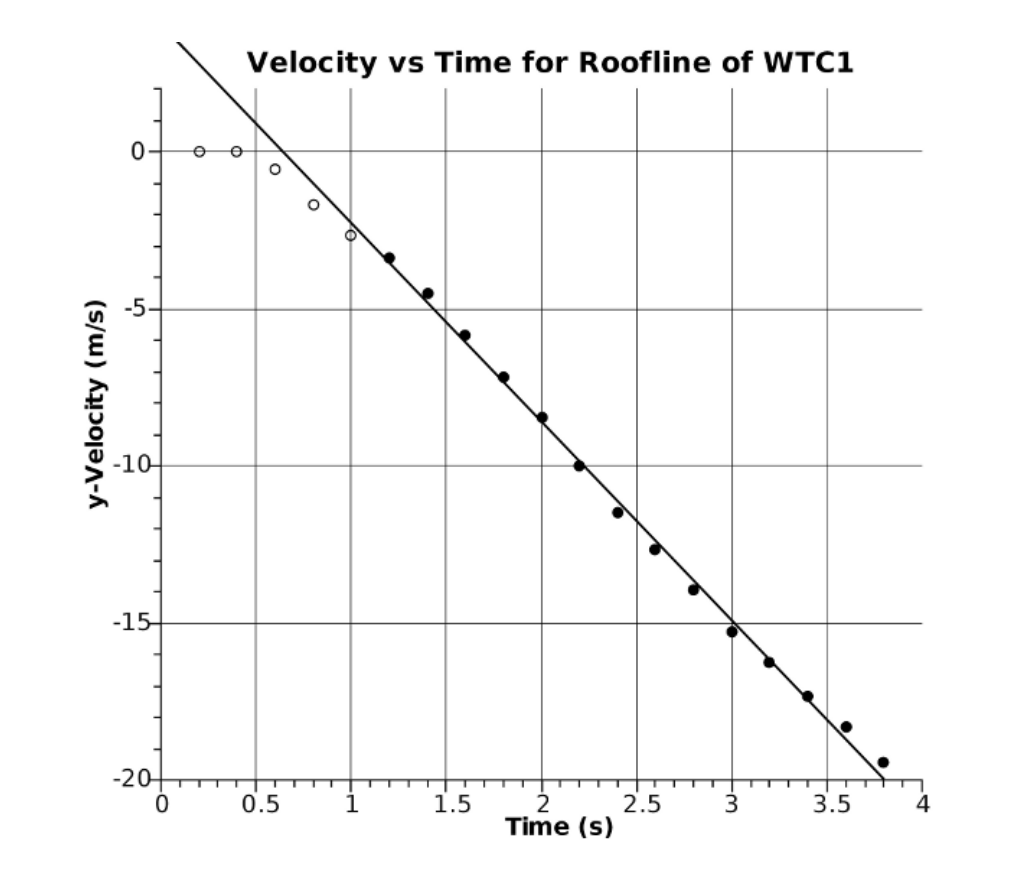
In 2011, the ASCE’s Journal of Engineering Mechanics published a paper by Dr. Zdeněk Bažant and Jia-Liang Le titled “Why the Observed Motion History of the World Trade Center Towers Is Smooth,” 8 in which the authors attempted to argue that the upper section’s deceleration was “far too small to be perceptible,” thus accounting for why the observed motion is “smooth.” Specifically, they calculated, the deceleration was “three orders of magnitudes smaller than the error of an amateur video, and thus undetectable.”
In response, researchers Tony Szamboti and Richard Johns submitted a Discussion paper to the Journal of Engineering Mechanics in May 2011.9 Their paper argued that Bažant and Le had used incorrect values for (1) the resistance of the columns, (2) the lower structure’s floor mass, and (3) the upper section’s total mass. Szamboti and Johns showed that when the correct values are applied, Bažant and Le’s analysis actually proves that the deceleration of the upper section would have been significant and detectable (if it were a true fire-induced progressive collapse), and that the collapse would have arrested within three seconds.
Unfortunately, the Journal of Engineering Mechanics inexplicably rejected Szamboti and Johns’ Discussion paper as “out of scope” after holding it in review for 27 months. So Szamboti and Johns, along with Dr. Gregory Szuladziński, a world-renowned expert in structural mechanics, wrote another paper refuting Bažant and Le’s analysis and submitted it to the International Journal of Protective Structures. That paper, titled “Some Misunderstandings Related to the WTC Collapse Analysis,” 10 was published in June 2013.
So little research has been published on why the Twin Towers underwent total collapse that Bažant and Le’s 2011 paper, and Bažant’s three earlier papers on the subject, are the only analysis that exists to support the official explanation of a fire-induced progressive collapse. That analysis has now been indisputably debunked by Szamboti, Johns, Szuladziński, and others.
Soupnazi630
Gold Member
- Dec 9, 2013
- 17,537
- 5,040
You are a liar as the film shows no such things as beams bursting into flames. No one sees any such thing in that video including you so my statement still stands as fact. There is no evidence of controlled demolition whatsoever.
only someone blind as a bat with really good drugs would soapbox that nonsense since we can see beams bursting into flames and flying apart mid air and as they fall.There is no evidence of such demolitionm whatsoever
and you think 64% proves it wasnt demolished is that it?Angelo consistently states that the speded of the towers collapse PROVES controlled demolition but it does not prove any such thing.
Sure but you wont like it, or at least you will get an explanation why your hypothesis is patently ludicrous and proves nothing, even though I already to told you, but it obviously blew right by you, or you ignored it.I want you to explain Angelo's theory and explanation.
I already told you several times, resistance variables need to be added in. That includes everything that slows the rate of descent caused by gravity, cant put it much simpler than that.Are you going to post the formula for free fall at 1 atm, or are you going to keep whining?
The speed of the gtowers falling proves only that trhey fell as they should the speed does not indicate controlled demolition and as ALWAYS you CANNOT post evidence of controlled demolition making the claim nothing more than a childish fallacy.
Soupnazi630
Gold Member
- Dec 9, 2013
- 17,537
- 5,040
You never pull anything you only run and dodge and avoid evidence because you are out of your league.nah, your arguments are never thought out simpleton arguments, I easily pull the rug out from beneath you every time you post. It just takes a couple hundred posts before you figure that outThis is what Koko does when he knows answering a question will lead somewhere he does not want it to. This is why he's answering for Angelo. He doesn't want Angelo to say something stupid either. It's a game he likes to play.
Soupnazi630
Gold Member
- Dec 9, 2013
- 17,537
- 5,040
Near-Free-Fall Acceleration | Twin Towers
According to the National Institute of Standards and Technology (NIST) — which is the U.S. government agency that investigated the World Trade Center’s destruction — the Twin Towers came down “essentially in free fall.” 1
NIST’s theory of the collapses hinges on the idea that the upper section of each tower could continuously accelerate through the lower stories at nearly the rate of gravity, while in the process completely dismembering the steel frames and pulverizing nearly all of the concrete to a fine powder.
Yet NIST provided no modeling or calculations to demonstrate that such behavior was possible. Instead, NIST arbitrarily stopped its analysis at the moment of “collapse initiation,” asserting that total collapse was “inevitable” once the collapses initiated.2
Astonishingly, NIST’s entire explanation for why the lower sections failed to stop or even slow the descent of the upper sections is limited to half a page of its 10,000-page report, in a section titled “Events Following Collapse Initiation,” 3 which asserts:
“The structure below the level of collapse initiation provided minimal resistance to the falling building mass at and above the impact zone. The potential energy released by the downward movement of the large building mass far exceeded the capacity of the intact structure below to absorb that through energy of deformation.
“Since the stories below the level of collapse initiation provided little resistance to the tremendous energy released by the falling building mass, the building section above came down essentially in free fall, as seen in videos.” — p. 146, NIST NCSTAR 1
In 2007, a group of scientists, an architect, and two 9/11 family members filed a “Request for Correction” to the NIST report under the Information Quality Act. They argued that, among other things, NIST failed to establish the likely technical cause of the building failures because it did not explain why, after collapse initiation, total collapse had ensued.4 They wrote:
“Here, NIST has not offered any explanation as to why (i.e. the technical cause of) the story below the collapse zone was not able to arrest the downward movement of the upper floors. The statement “as evidenced by the videos from several vantage points” is only an explanation of what occurred, but gives the reader absolutely no idea why it occurred. Basic principles of engineering (for example, the conservation of momentum principle) would dictate that the undamaged steel structure below the collapse zone would, at the very least, resist and slow the downward movement of the stories above…. The families of the firefighters and WTC employees that were trapped in the stairwells when the entirety of the WTC Towers collapsed on top of them would surely appreciate an adequate explanation of why the lower structure failed to arrest or even resist the collapse of the upper floors.” — p. 20, Request for Correction
NIST responded to the Request for Correction with the remarkable admission that it was not able to provide a full explanation of the total collapse: 5
“NIST carried its analysis to the point where the buildings reached global instability. At this point, because of the magnitude of deflections and the number of failures occurring, the computer models are not able to converge on a solution…. [W]e are unable to provide a full explanation of the total collapse.” — p. 3-4, NIST Response to Request for Correction
Total Collapse Explained
While NIST failed to provide an explanation for the total collapse of the Twin Towers, several independent researchers have taken on that challenge.
The upper section of the North Tower.
Central to their analysis has been to measure the downward motion of the upper section of WTC 1 (the North Tower). Two papers in particular have found that, in the four seconds before the upper section disappeared from view, the rate of acceleration remained constant, at approximately 64 percent of free fall,6 and there was never an observable deceleration.7
Based on Newton’s Third Law of Motion, which states that for every action there is an equal and opposite reaction, we know there would have been a deceleration of WTC 1’s upper section if it had impacted and crushed the intact structure below it. The absence of deceleration is incontrovertible proof that another force (i.e., explosives) must have been responsible for destroying the lower structure before the upper section reached it.
Figure 1: This graph from David Chandler’s “Destruction of the World Trade Center North Tower and Fundamental Physics” (Journal of 9/11 Studies, February 2010) shows that the North Tower’s upper section traveled at nearly uniform downward acceleration of -6.31 m/s2 (with an R2 value of 0.997), or 64% of free fall.
In 2011, the ASCE’s Journal of Engineering Mechanics published a paper by Dr. Zdeněk Bažant and Jia-Liang Le titled “Why the Observed Motion History of the World Trade Center Towers Is Smooth,” 8 in which the authors attempted to argue that the upper section’s deceleration was “far too small to be perceptible,” thus accounting for why the observed motion is “smooth.” Specifically, they calculated, the deceleration was “three orders of magnitudes smaller than the error of an amateur video, and thus undetectable.”
In response, researchers Tony Szamboti and Richard Johns submitted a Discussion paper to the Journal of Engineering Mechanics in May 2011.9 Their paper argued that Bažant and Le had used incorrect values for (1) the resistance of the columns, (2) the lower structure’s floor mass, and (3) the upper section’s total mass. Szamboti and Johns showed that when the correct values are applied, Bažant and Le’s analysis actually proves that the deceleration of the upper section would have been significant and detectable (if it were a true fire-induced progressive collapse), and that the collapse would have arrested within three seconds.
Unfortunately, the Journal of Engineering Mechanics inexplicably rejected Szamboti and Johns’ Discussion paper as “out of scope” after holding it in review for 27 months. So Szamboti and Johns, along with Dr. Gregory Szuladziński, a world-renowned expert in structural mechanics, wrote another paper refuting Bažant and Le’s analysis and submitted it to the International Journal of Protective Structures. That paper, titled “Some Misunderstandings Related to the WTC Collapse Analysis,” 10 was published in June 2013.
So little research has been published on why the Twin Towers underwent total collapse that Bažant and Le’s 2011 paper, and Bažant’s three earlier papers on the subject, are the only analysis that exists to support the official explanation of a fire-induced progressive collapse. That analysis has now been indisputably debunked by Szamboti, Johns, Szuladziński, and others.
There is not and never has been an offiical theory of fire induced progressive collapse.
You have debunked nothing and neither have these second rate people you cite.
Soupnazi630
Gold Member
- Dec 9, 2013
- 17,537
- 5,040
You ansewered nothing and told nothing you refused to answer because you are a fool and know you are outclassed.
only someone blind as a bat with really good drugs would soapbox that nonsense since we can see beams bursting into flames and flying apart mid air and as they fall.There is no evidence of such demolitionm whatsoever
and you think 64% proves it wasnt demolished is that it?Angelo consistently states that the speded of the towers collapse PROVES controlled demolition but it does not prove any such thing.
Sure but you wont like it, or at least you will get an explanation why your hypothesis is patently ludicrous and proves nothing, even though I already to told you, but it obviously blew right by you, or you ignored it.I want you to explain Angelo's theory and explanation.
I already told you several times, resistance variables need to be added in. That includes everything that slows the rate of descent caused by gravity, cant put it much simpler than that.Are you going to post the formula for free fall at 1 atm, or are you going to keep whining?
KokomoJojo
VIP Member
- Oct 2, 2013
- 2,180
- 185
thanks! for alerting me the exact scam that gam et al are trying to pull! There is always a sleight of hand politicized strawman scam connected to these guys arguments.Figure 1: This graph from David Chandler’s “Destruction of the World Trade Center North Tower and Fundamental Physics” (Journal of 9/11 Studies, February 2010) shows that the North Tower’s upper section traveled at nearly uniform downward acceleration of -6.31 m/s2 (with an R2 value of 0.997), or 64% of free fall.

Ok cheap seat cheerleaders your turn!
Soupnazi630
Gold Member
- Dec 9, 2013
- 17,537
- 5,040
It is still your turn.thanks! for alerting me the exact scam that gam et al are trying to pull! There is always a sleight of hand politicized strawman scam connected to these guys arguments.Figure 1: This graph from David Chandler’s “Destruction of the World Trade Center North Tower and Fundamental Physics” (Journal of 9/11 Studies, February 2010) shows that the North Tower’s upper section traveled at nearly uniform downward acceleration of -6.31 m/s2 (with an R2 value of 0.997), or 64% of free fall.
Ok cheap seat cheerleaders your turn!
Nothing in Angelos post addfersses the questioon you are too chicken shit to answer.
Answer it now
Koko, you missed this...I thought nobody uses free fall in a vacuum to determine things here on earth Koko? Why did Chandler use "free fall in a vacuum" to compare a building falling on Earth?thanks for answering the question!the question remains, what are you trying to prove?
I'm not trying to prove anything. Poor Angelo claimed free-fall and his own source
said 64% of free-fall. Do you understand the error in his claim? Are you retarded?
so then gam and you believe that 64% of freefall in a vacuum means that no explosives were used and it was not a demolition?
the other mike
Diamond Member
- Jan 5, 2019
- 41,899
- 22,500
- Thread starter
- #313
There is not and never has been an offiical theory of fire induced progressive collapse.
You have debunked nothing and neither have these second rate people you cite.
The Official Theory | Twin Towers
The seven-year quest to produce an official technical explanation for the destruction of World Trade Center Buildings 1, 2, and 7 represents an unparalleled case study in “expectation bias."NFPA 921: Guide for Fire and Explosion Investigations, which serves as the national guide for fire and explosion investigations in the United States, defines “expectation bias” as follows:
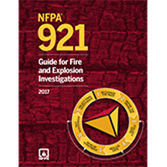
“Expectation bias is a well-established phenomenon that occurs in scientific analysis when investigator(s) reach a premature conclusion without having examined or considered all of the relevant data. Instead of collecting and examining all of the data in a logical and unbiased manner to reach a scientifically reliable conclusion, the investigator(s) uses the premature determination to dictate investigative processes, analyses, and, ultimately, conclusions, in a way that is not scientifically valid. The introduction of expectation bias into the investigation results in the use of only that data that supports this previously formed conclusion and often results in the misinterpretation and/or the discarding of data that does not support the original opinion. Investigators are strongly cautioned to avoid expectation bias through proper use of the scientific method.”
NFPA 921 also explicitly urges investigators to avoid presumption in the formulation of hypotheses:
“Until data have been collected, no specific hypothesis can be reasonably formed or tested. All investigations of fire and explosion incidents should be approached by the investigator without presumption…until the use of scientific method has yielded testable hypotheses, which cannot be disproved by rigorous testing.”
As discussed below, the two official investigations of the WTC destruction flagrantly violated these principles, resulting in incomplete hypotheses that are wholly unsupported by any evidence and that ignore most of the relevant evidence.
The WTC FEMA Building Performance Study
“‘It appeared to me that charges had been placed in the building,’ said Mr. Hamburger, chief structural engineer for ABS Consulting in Oakland, Calif. Upon learning that no bombs had been detonated, ‘I was very surprised.’”This quote from Ronald Hamburger appeared in The Wall Street Journal on September 19, 2001. By that time, Hamburger was one of a team of engineers that had been assembled by the American Society of Civil Engineers (ASCE) and that would be given authority under FEMA to investigate the World Trade Center destruction. He would also be named “Chapter Leader” for the chapter on WTC 1 and WTC 2 in FEMA’s final report.
How did Ronald Hamburger learn that “no bombs had been detonated?” FEMA’s investigators were not granted access to the site until the week of October 7. Thus, neither he nor anyone else had conducted forensic analysis of the debris, nor had they interviewed eyewitnesses. From a scientific perspective, as codified NFPA 921, there was no basis for disconfirming his initial hypothesis.
The likely answer is that between September 11 and the time that he was interviewed, the government and the media had put forth an account of the day’s events that was incompatible with his original assessment that the buildings had been brought down with explosives. Therefore, as Hamburger essentially stated, he ruled out his initial hypothesis when he “learned” that the official account did not include explosives being used to bring down the buildings.
Even though the destruction of WTC 1 and WTC 2 appeared to many to be caused by explosives, and despite the fact that no steel-framed high-rise had ever collapsed due to fire, the FEMA investigation proceeded with fire-induced failure as its only hypothesis. In addition, the investigative team was subject to significant external constraints. As New York Times reporters James Glanz and Eric Lipton wrote:
"[T]he investigation was financed and given its authority by [FEMA], with which [lead investigator Gene] Corley’s team had a shaky relationship from the start. For months after September 11, the investigators...were unable to persuade FEMA to obtain basic data like detailed blueprints of the buildings that collapsed. Bureaucratic restrictions often kept the engineers from interviewing witnesses to the disaster, making forensic inspections at ground zero, or getting crucial information like recorded distress calls from people trapped in the buildings. For reasons that would remain known only to FEMA, the agency refused to let the team appeal to the public for photographs and videos of the towers that could help with the investigation.” 1
Most detrimental to the team’s ability to conduct forensic analysis was the City’s recycling of the buildings’ steel, which continued despite requests from the investigators — and outcry among the victims’ families and the fire safety community — for the steel to be saved.2 Although investigators were eventually granted access to the scrap yards, nearly all of the steel, including most of the steel from the upper floors of WTC 1 and WTC 2, was destroyed before it could be inspected.3
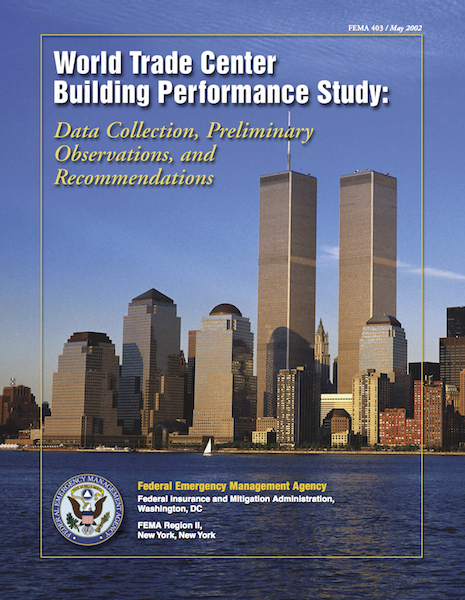
FEMA released its report, titled World Trade Center Building Performance Study: Data Collection, Preliminary Observations, and Recommendations, on May 1, 2002. As implied in the title, the report did not attempt to provide a definitive explanation for the destruction of each building. Instead, it posited scenarios in general terms and recommended further investigation to definitively determine the exact causes.
FEMA’s scenario for WTC 1 and WTC 2 — which reflected common thinking at that time but was later ruled out by the National Institute of Standards and Technology (NIST) — is what became known as the “pancake theory.” According to this hypothesis, the fires caused the floor trusses to lose their rigidity and sag. As a result of the sagging, the column-to-truss connections failed and the floors collapsed onto the floors below them. This precipitated “an immediate progressive series of floor failures,” which left behind “tall freestanding portions of the exterior wall and possibly central core columns.” FEMA then stated, “As the unsupported height of these freestanding exterior wall elements increased, they buckled at the bolted column splice connections, and also collapsed. Perimeter walls of the building seem to have peeled off and fallen directly away from the building face, while portions of the core fell in a somewhat random manner.”
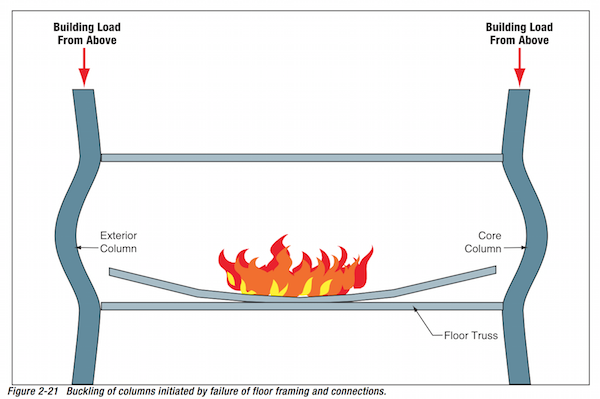
The NIST Investigation
Amid a growing sense that the FEMA investigation was insufficient for the task of conducting a full-scale investigation, NIST began planning its own investigation in October 2001 to eventually succeed FEMA’s. The NIST investigation was announced on August 21, 2002, and was scheduled to take 24 months.In its final plan, released in August 2002, NIST acknowledged that fire had never caused the total collapse of a high-rise building prior to September 11, 2001. Nonetheless, it pursued this hypothesis without reservation, even going so far as to treat it as fact: “The WTC Towers and WTC 7 are the only known cases of total structural collapse in high-rise buildings where fire played a role.”
In its second progress report, released in May 2003, NIST laid out three leading hypotheses for the destruction of WTC 1 and WTC 2. One was FEMA’s “pancake theory” involving the failure of floor connections. Another hypothesis suggested that the floor connections held strong, which then caused the sagging floors to pull the exterior columns inward until they buckled. This would become the main initiating mechanism in NIST’s “Probable Collapse Sequence.” The third hypothesis posited direct fire-induced column failure.
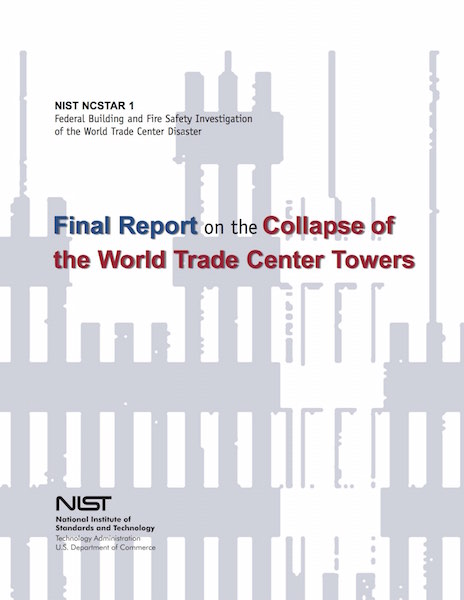
In June 2004, NIST released a third, much more extensive progress report containing interim findings and a working hypothesis for the destruction of WTC 1 and WTC 2. Although the working hypothesis described the overall sequence of events from airplane impact to collapse initiation in relatively clear steps, NIST did not settle on any of the three hypotheses outlined in the previous progress report or on a location in either building where the initiating failure might have occurred.
In September 2005, NIST released its final report on WTC 1 and WTC 2. The table below is a summary of NIST’s “Probable Collapse Sequence.”
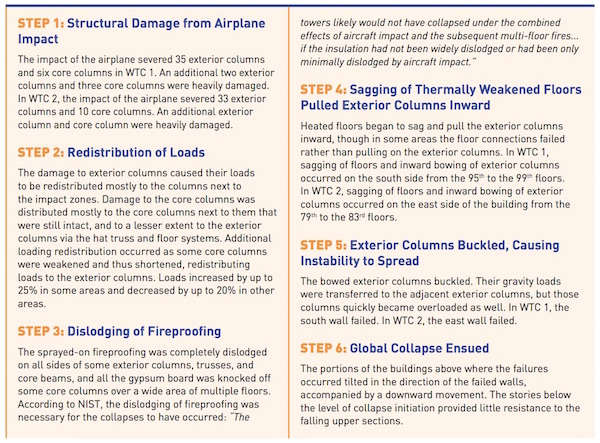
As mentioned above, the main initiating mechanism in NIST’s “Probable Collapse Sequence” involves the sagging of thermally weakened floor trusses pulling exterior columns inward until some of the exterior columns buckled, which then caused instability to spread to the other columns. The tops of the buildings above where the failures occurred then tilted in the direction of the failed walls and began to fall. According to NIST, at this point, global collapse became inevitable as the stories below the level of collapse provided little resistance.
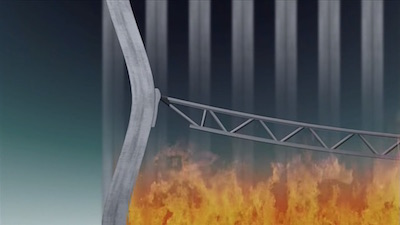
As researcher Frank Legge points out, “the fire based official explanation is a series of events, like links in a chain, while the explosive based explanation is a parallel set of scientific studies of evidence…. If an explanation is in the form of a chain it is only necessary to prove one link wrong to destroy the case.” 4
Below we focus on NIST’s failed attempts to prove three links in that chain: Fireproofing Dislodgment, Heating of Structural Members, and Collapse Initiation and Progression.
For discussion of NIST’s failure to analyze and explain why total collapse ensued after collapse initiation, see Near-Free-Fall Acceleration and Explosive Features. For more extensive critiques of NIST’s explanation for the destruction of WTC 1 and WTC 2, see the items above under “More on this Subject.”
Fireproofing Dislodgement
The fire protection in WTC 1 and WTC 2 consisted primarily of “sprayed fire-resistive material,” or SFRM. Some columns also had gypsum wallboard enclosures, and some had a combination of both.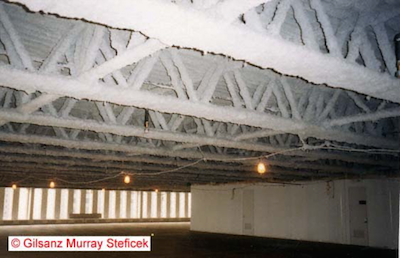
NIST’s “Probable Collapse Sequence” depends heavily upon the dislodgement of these materials by the airplane impacts. In its final report, NIST concluded:
“The WTC towers likely would not have collapsed under the combined effects of aircraft impact damage and the extensive, multi-floor fires that were encountered on September 11, 2001, if the thermal insulation had not been widely dislodged or had been only minimally dislodged by the aircraft impact.” 5
Yet NIST produced remarkably little evidence to support its claim that fireproofing dislodgement significantly affected the structures.
Because such dislodgement would not have been visible from outside the buildings, the extent of dislodgement had to be estimated based on where NIST’s aircraft impact simulations predicted damage to wall partitions or furnishings. At the very end of its investigation, NIST finally performed physical testing “to provide evidence regarding the assumption that...the SFRM used for thermal insulation of structural members was damaged and dislodged.” This testing, contained in NIST’s “Debris Impact Study,” involved shooting 15 rounds from a shotgun at a flat steel plate and a metal bar coated with fireproofing inside a plywood box. Referring to that experiment, Kevin Ryan writes:
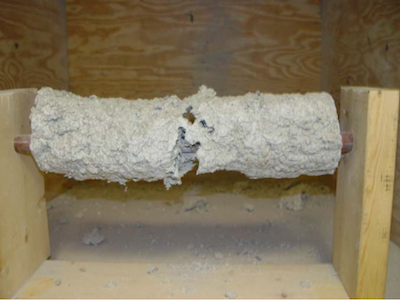
“t’s not hard to see that these tests actually disproved their findings.... Nearly 100,000 blasts would have been needed based on NIST’s own damage estimates, and these would have to be directed in a very symmetrical fashion to strip the columns and floors from all sides....
“To put NIST’s pivotal claim to rest, there was simply no energy available to cause fireproofing loss. Previous calculations by engineers at MIT had shown that all the kinetic energy from the aircraft was consumed in breaking columns, crushing the floors and destroying the aircraft itself. But NIST’s tests indicate that 1 MJ of energy was needed per square meter of surface area to sheer the fireproofing off.... [T]he extra energy needed would be several times more than the amount of kinetic energy available to begin with.” 6
Moreover, fireproofing dislodgement could not have contributed to the collapse of WTC 1, because it did not occur where the collapse initiated. The collapse of WTC 1 started at the 98th floor. Yet, according to NIST, no fireproofing was dislodged on any of the core columns on the 98th floor or on the floor trusses supporting the 99th floor.
Heating of Structural Members
Although nearly all of the WTC steel was destroyed before it could be inspected, NIST was able to obtain “about 236 pieces of WTC steel,” as reported in its December 2003 Public Update. NIST explained that “[r]egions of impact and fire damage were emphasized in the selection of the steel for the Investigation.” It then declared, “NIST believes that this collection of steel from the WTC Towers is adequate for the purposes of the Investigation.”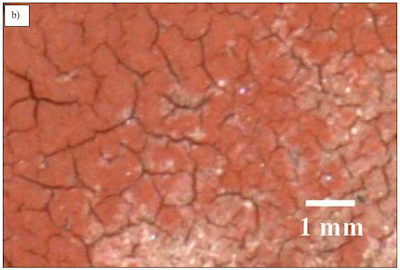
Out of the more than 170 areas that NIST tested on recovered exterior columns, it found only three locations that bore evidence of the steel reaching temperatures above 250°C. NIST also found that the steel “show[ed] no evidence of exposure to temperatures above 600°C for any significant time.” It obtained similar results from the two core columns recovered from the fire-affected floors.7 NIST therefore conceded:
“From the limited number of recovered structural steel elements, no conclusive evidence was found to indicate that pre-collapse fires were severe enough to have a significant effect on the microstructure that would have resulted in weakening of the steel structure.” 8
However, despite its initial declaration that the collected steel was “adequate for the purposes of the investigation,” NIST’s report downplays the results of its testing, frequently reminding the reader that the exterior columns it tested were only three percent of the exterior columns on the fire floors and thus “cannot be considered representative of other columns on these floors.”
From a statistical perspective, though, 170 areas is not an insignificant sample size from which to extrapolate, particularly when “regions of impact and fire damage were emphasized” and less than two percent of the sample reached temperatures above 250°C — not to mention the temperatures of 600° and higher used in NIST’s computer model.
In 2007, a group of scientists, an architect, and two 9/11 family members filed a “Request for Correction” to the NIST report under the Information Quality Act.9 They requested that, among other things, NIST’s report “be revised to make its computer simulation conditions actually simulate physical reality.” The Request noted:
“NIST has provided no justification whatsoever for allowing its computer simulations to heat the steel to temperatures well above 600°C when its own physical tests reveal that little, if any, of the steel inside the WTC ever reached 600°C.”
Yet NIST’s response to the Request for Correction completely ignored the 170 areas on the exterior columns that NIST had tested. Instead, the response focused solely on the two core columns that it had also tested, making the obvious claim that they were too small a sample size from which to extrapolate. And it asserted the validity of its fire modeling, which, however informative, tells us nothing conclusive about the temperatures that the steel reached.10
Collapse Initiation and Progression
Because most of the WTC steel was destroyed before it could be inspected, the NIST WTC investigation had to rely almost entirely on computer modeling. The modeling performed by NIST failed — effectively disproving its hypothesis — in two ways:1. It did not replicate the observed structural behavior of the buildings, and
2. It required significant manipulation — in other words, applying information known to be factually unsupported — in order to achieve collapse initiation.
First, as discussed elsewhere, NIST provided no modeling to support its claim that the upper sections of WTC 1 and WTC 2 could accelerate through 92 stories and 76 stories, respectively, of intact structure “essentially in free fall.” NIST later admitted, “ecause of the magnitude of deflections and the number of failures occurring, the computer models are not able to converge on a solution.... [W]e were unable to provide a full explanation of the total collapse.”11 NIST also refused to provide visualizations of its models showing collapse initiation.12
Among the many ways in which NIST manipulated its modeling of WTC 1 and WTC 2, two are critical to NIST’s “Probable Collapse Sequence.” First, the results of NIST’s physical testing on floor assemblies subjected to fire conditions of 2,000°F showed that the floors sagged four inches after 60 minutes of exposure and six inches after 100 minutes of exposure, which were the approximate durations of the fires in WTC 2 and WTC 1, respectively.13 However, NIST’s modeling allowed for sagging of more than 42 inches.

In its response to the 2007 Request for Correction and in its FAQs, NIST claimed that the floor assembly testing was not intended to be relevant to its structural analysis: Only fireproofed floor assemblies were tested, whereas the fireproofing on September 11 was widely dislodged. But the authors of the Request for Correction rejected that claim for a number of reasons:
1. What was the purpose of the testing if it was not to analyze the thermal-structural response of the towers?
2. The tested floor assemblies actually had less fireproofing on them than the real WTC floor assemblies.
3. NIST did not substantiate its claim that fireproofing dislodgement significantly affected the structures, as discussed above.
4. The duration of the fires in the testing was much longer than the duration of the fires in the areas where NIST claimed the floors sagged.14
The second critical way in which NIST manipulated its modeling of WTC 1 and WTC 2 was to artificially induce the inward bowing of exterior columns to the point of buckling (which NIST claimed initiated the collapses). Because NIST’s model showed that floor sagging did not cause the exterior columns to bow inward to the point of failing, NIST applied an artificial lateral load of 5,000 pounds to each column from outside the building in order to make the exterior columns fail. In a feat of circular logic, NIST justified doing so in order to match the observed inward bowing.15
Did NIST provide ‘extraordinary evidence’ to support its hypothesis?
In his 2009 book The Mysterious Collapse of World Trade Center 7, preeminent 9/11 researcher David Ray Griffin commented that a key principle of the scientific method is as follows: “Unprecedented causes should not, without good reasons, be posited to explain familiar occurrences. Given the regularity of nature—which is both assumed and continually confirmed by science—we properly assume, unless there is extraordinary evidence to the contrary, that each instance of a familiar occurrence was produced by the same causal factors that brought about previous instances."16In the case at hand, the familiar occurrence was the total destruction of the three steel-framed high-rises, which, prior to September 11, 2001, had resulted numerous times from the procedure of controlled demolition, and never from fire. In order for fire to be posited as the cause of these three catastrophic collapses, “extraordinary evidence to the contrary” should be called for.
The inability of investigators at FEMA and NIST to construct a plausible explanation involving fire-induced failure, supported by sound scientific analysis, illustrates not just the absence of “extraordinary evidence," but the absence of any evidence at all.
the other mike
Diamond Member
- Jan 5, 2019
- 41,899
- 22,500
- Thread starter
- #314
There's a chain of custody issue with some evidence, but once that's all settled,
it will be a game changer. (I'm guessing )
I can hardly wait.

it will be a game changer. (I'm guessing )
I can hardly wait.
Last edited:
the other mike
Diamond Member
- Jan 5, 2019
- 41,899
- 22,500
- Thread starter
- #315
Key Evidence of Controlled Demolition
Active Thermitic Material Discovered in Dust from the 9/11 World Trade Center Catastrophe
Extremely high temperatures during the World Trade Center destruction
The Missing Jolt: A Simple Refutation of the NIST-Bažant Collapse Hypothesis
Destruction of the World Trade Center North Tower and Fundamental Physics
Some Misunderstandings Related to the WTC Collapse Analysis
Free Fall and Building 7 on 9/11
A Discussion of “Analysis of Structural Response of WTC 7 to Fire and Sequential Failures Leading to Collapse”
118 Witnesses: The Firefighters' Testimony to Explosions in the Twin Towers
Were Explosives the Source of the Seismic Signals Emitted from New York on September 11, 2001?
Toddsterpatriot
Diamond Member
- May 3, 2011
- 102,125
- 36,162
I already told you several times, resistance variables need to be added in.
What are you waiting for? Post it.
the other mike
Diamond Member
- Jan 5, 2019
- 41,899
- 22,500
- Thread starter
- #317
the other mike
Diamond Member
- Jan 5, 2019
- 41,899
- 22,500
- Thread starter
- #318
Proof of Santa Claus ?I already told you several times, resistance variables need to be added in.
What are you waiting for? Post it.
Toddsterpatriot
Diamond Member
- May 3, 2011
- 102,125
- 36,162
Proof of Santa Claus ?I already told you several times, resistance variables need to be added in.
What are you waiting for? Post it.
You're back?
I thought your 64% versus 100% error made you flee.
Maybe you can post the real acceleration formula at 1 atm?
the other mike
Diamond Member
- Jan 5, 2019
- 41,899
- 22,500
- Thread starter
- #320
Todd Dulles chimes in again, always lurking in the shadows.
- Status
- Not open for further replies.
Similar threads
- Replies
- 26
- Views
- 368
- Replies
- 43
- Views
- 2K
- Replies
- 2
- Views
- 557
- Replies
- 188
- Views
- 6K
- Replies
- 709
- Views
- 16K
Latest Discussions
- Replies
- 386
- Views
- 1K
- Replies
- 95
- Views
- 562
- Replies
- 30
- Views
- 111
- Replies
- 188
- Views
- 8K
Forum List
-
-
-
-
-
Political Satire 8504
-
-
-
-
-
-
-
-
-
-
-
-
-
-
-
-
-
-
-
ObamaCare 781
-
-
-
-
-
-
-
-
-
-
-
Member Usernotes 482
-
-
-
-
-
-
-
-
-
-